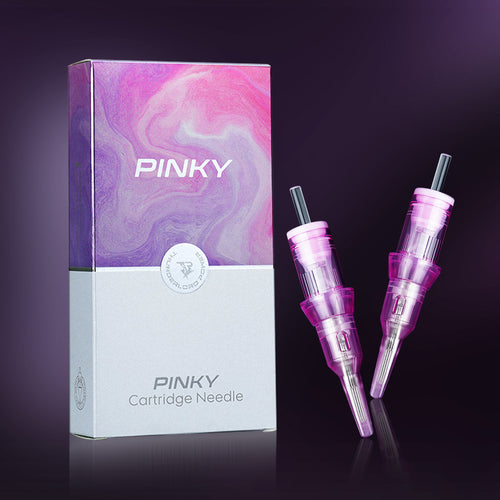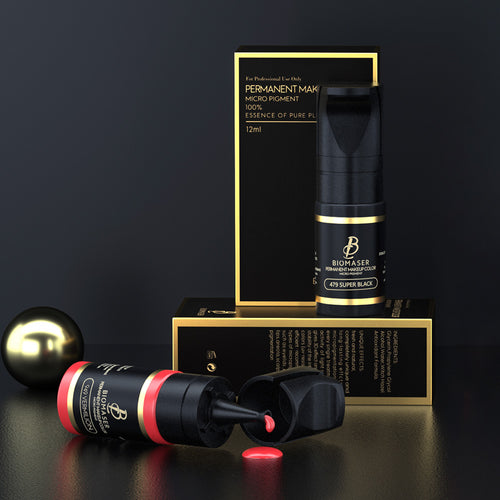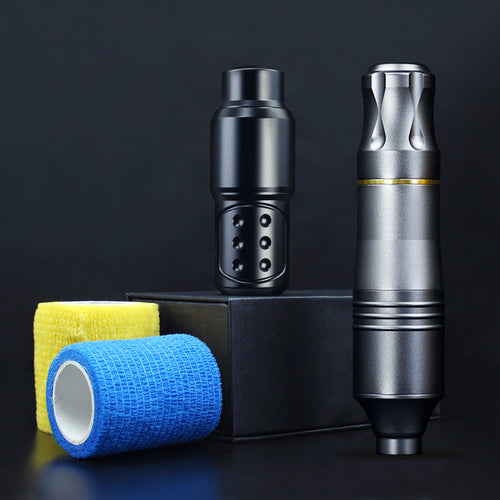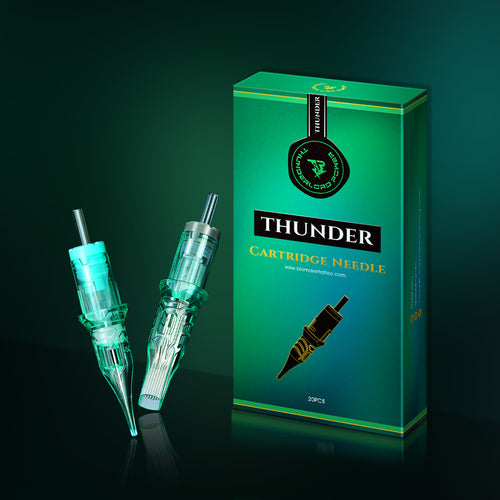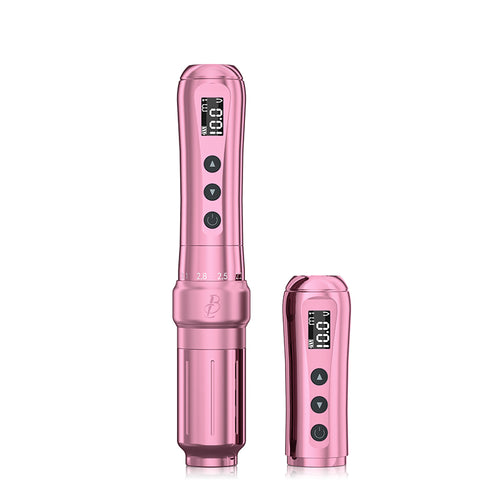From Novice to Pro: the Journey with Professional Tattoo Machines

Embarking on your journey with professional tattoo machines significantly boosts your artistic capabilities. Starting with simpler machines allows for developing proper techniques, practiced initially on mock skin. As your skills evolve, consider investing in high-end customizable machines to enhance precision. Keep pace with industry innovations and draw wisdom from experienced artists, yet never underestimate the importance of mastering the fundamental techniques. Remember, while the right tools can magnify your work, it is your passion, patience, and perseverance that truly define you as an artist.
Understanding Your Machine: An In-Depth Look at Wireless Tattoo Machines and Tattoo Pens
As a novice tattoo artist, practicing on simpler, corded tattoo machines lays the foundation for your understanding of the craft. It allows you to focus on mastering basic techniques without too many variables at play.
As you grow in your skill and confidence, transitioning to advanced tools like wireless tattoo machines can significantly enhance your artistic capabilities. These wireless tattoo machines eliminate the hassle of cords, granting artists more freedom of movement and portability. They are ideal for conventions or guest spots at other studios. Since there are no tethers, artists can easily maneuver around clients to reach difficult spots, enabling better results. Most have adjustable voltage controls for different techniques like lining, shading, and packing color. Their built-in batteries typically last for hours of continuous use.
Tattoo pens mimic the shape and feel of a traditional pen, allowing for more control and precision. Their ergonomic design reduces hand fatigue, enabling artists to work longer and more comfortably. They are incredibly versatile, suitable for tasks like lining, shading, packing color, and stippling by simply adjusting the needle depth and machine's voltage. Their slim shape provides better visibility of the tattooing area, enabling minute details and accuracy. Most are compatible with various types of cartridges, eliminating the need for multiple machines.

Choosing your first professional machine is a pivotal decision. Consider factors like comfort, ease of use, versatility, battery life, and cost when deciding between wireless machines and pens. The right tool can significantly enhance your skills, refine your techniques, and ultimately contribute to success in the tattoo industry.
Basic Tattoo Techniques: Building a Strong Foundation
Learning the basics of tattooing well will give you a strong foundation to build your technique and skills. Mastering line work, shading, color packing, and stippling are essential first steps.

Line work: The bedrock of tattoo design
Clean, precise lines are critical for all tattoos, no matter how complex. Practice on artificial skin until lines are smooth, consistent, and done at an even depth. Select the proper needle cartridge for desired line thickness. Only a steady hand and feel for your machine's 'sweet spot' can deliver professional-grade lines.
Shading: The skill that makes tattoos come alive
Shading adds depth, dimension, and realism to tattoo designs. Experiment with various skin tones until you've perfected different shading techniques - circular, vertical, horizontal, and so on. Pay close attention to gradients and transitions between tones. Subtlety, through the proper application of light and dark values, brings tattoos to life.
Color packing: Achieving vibrant, even tones
Saturating skin with vibrant, even-toned color takes practice. The key is finding the right balance - applying enough ink for solid coverage while avoiding overworking the skin. Choose the perfect needle size for the job - magnums for filling larger areas, smaller cartridges for finer details. With repetition comes mastery of achieving an even spread of color.
Stippling: Creating intricate, dot-based designs
Stippling tattoo designs rely on patience and precise needlework. From mandalas to geometric forms, these often complex patterns are built up using tiny dots. Control of your machine and a light touch are vital. But the payoff is truly unique designs that stand out from standard line work.
Whip shading: Gradients and subtle transitions
Another method that requires patience and precise needlework is whip shading. By pulling needles across the skin using a 'whip' motion, artists create stunning color gradients and subtle transitions between tones. While challenging, it's an advanced technique that elevates designs with softly blended shades.
Progress comes through endless practice and experimentation. Your skills will grow, your eye for precision will sharpen, and your techniques will be refined with each tattoo. Keep patience, passion, and a desire to perfect your craft-- steady hands follow!
Advanced Tattoo Techniques: Elevating Your Skill Set
Elevating your skills unlocks a world of creative possibilities. As you experiment with techniques like photorealistic tattoos, watercolor designs, and blackwork, pushing boundaries and expanding your repertoire, your artistic vision and instincts will develop in immense and unexpected ways.
1. Photorealistic Tattoos: Capturing Life on the Skin
Bringing photographic realism to tattoos requires intense focus on details - from shadows and highlights to minuscule elements. Through continuous practice and the use of high-quality machines, artists can master needlework precisely enough to recreate the detail and depth of a photograph on the skin.
2. Portrait Tattoos: Capturing the Essence of the Subject
While creating lifelike images is one facet of tattoo artistry, capturing the essence of a person in a portrait tattoo takes it a step further.
Beyond physical accuracy, portrait tattoos aim to represent the subject's personality, spirit, and emotions. Subtlety in shading, nuanced groupings of needles, and composition bring the portrait to life beyond mere resemblance.
3. Watercolor Tattoos: Unleashing Vibrant Colors and Creativity
These designs draw inspiration from watercolor paintings by employing vibrant colors and blurred lines. Mastering gradient techniques, blending colors seamlessly, and experimenting with effects like 'blooms' and 'splatters' bring watercolor designs to the skin.
4. Geometric and Mandala Tattoos: Precision and Symmetry Reign Supreme
Abstract designs rely on fully controlling placement and pattern. Perfect symmetry, consistency across repetitions, and precise angles define abstract tattoos. Creating complexity through simplicity - shapes like circles, triangles, and squares combined in intricate, symmetrical arrangements - demands machine finesse and geometric intuition.
5. Blackwork Tattoos: Harnessing Solid Ink on Skin
Solid blocks of black ink require consistent needlework across multiple passes to achieve even density. In subtler blackwork, texture, shape, and negative space become the focus rather than intricate lines. Blackwork can range from tribal patterns to minimalist designs - all dependent on consistent, nuanced use of solid black ink.
6. White Ink Tattoos: Working with a Delicate Medium
White ink offers subtle, almost ghostly tattoos appropriate for minimalist designs. But challenges persist - faster fading, unsuitable for all skin tones, and a tendency to yellow over time. Experience with white ink, careful design selection, and preparing clients for limitations define this delicate art.
As you experiment, push boundaries, and embrace new techniques, your repertoire and artistic instincts will expand in immense and unexpected ways. Each challenge you overcome helps refine your skills and elevate your craft.
Continuous Learning: Staying Updated in the Tattoo Industry
In an artistically dynamic and technologically progressive industry such as tattooing, embracing continuous learning becomes an exciting part of your journey as a tattoo artist.
Staying Abreast with Technological Innovations and Trends
The world of tattooing is ever-changing, driven by constant innovation and the emergence of new trends. As an artist, you must constantly hone your skills and adapt to the shifting environment in order to remain abreast of these changes. Whether mastering new styles, experimenting with innovative inks, or utilizing cutting-edge equipment, staying abreast of the most recent innovations is essential for maintaining a competitive advantage.
Networking and Collaborating with Other Tattoo Artists
Effective networking plays a crucial role in individual growth within this ever-expanding field. Developing relationships with other tattoo artists opens the door to knowledge exchange, exposure to diverse techniques, and the possibility of future collaborations. Participate in conventions, online forums, and seminars - take advantage of every opportunity to learn and contribute to your professional community. This participation fosters a broader, more inclusive understanding of the art form and contributes to its evolution.
Conclusion
The journey from novice to professional tattoo artist requires passion, perseverance, and relentless learning. Mastering basics cultivate core abilities while honing specific techniques bolsters expertise, patience, and adaptability to trends and technologies are crucial. Yet, what truly shapes this journey is your passion for the craft and your desire to make a lasting impact on your clients. Mastery is never complete, so embrace continuous learning, curiosity, and self-challenge inspired by peers who push boundaries and foster innovation. Polish your skills, refine your techniques, and ultimately leave your distinct mark on each client's story.




